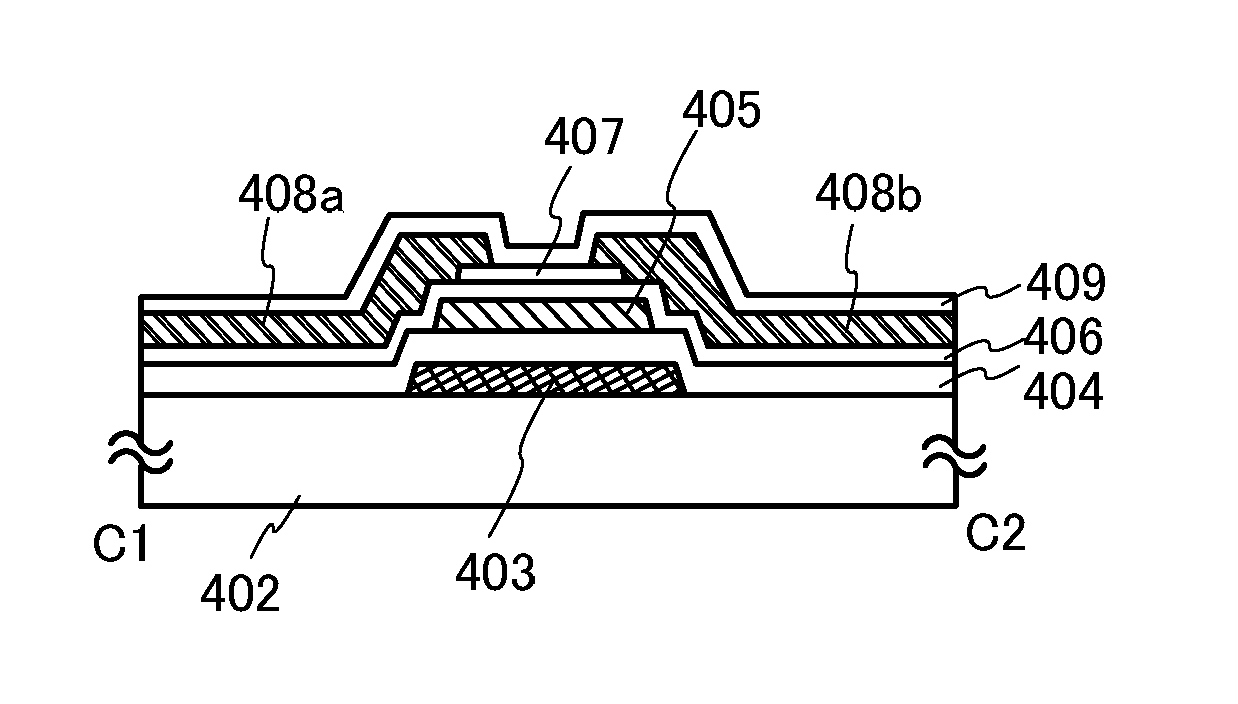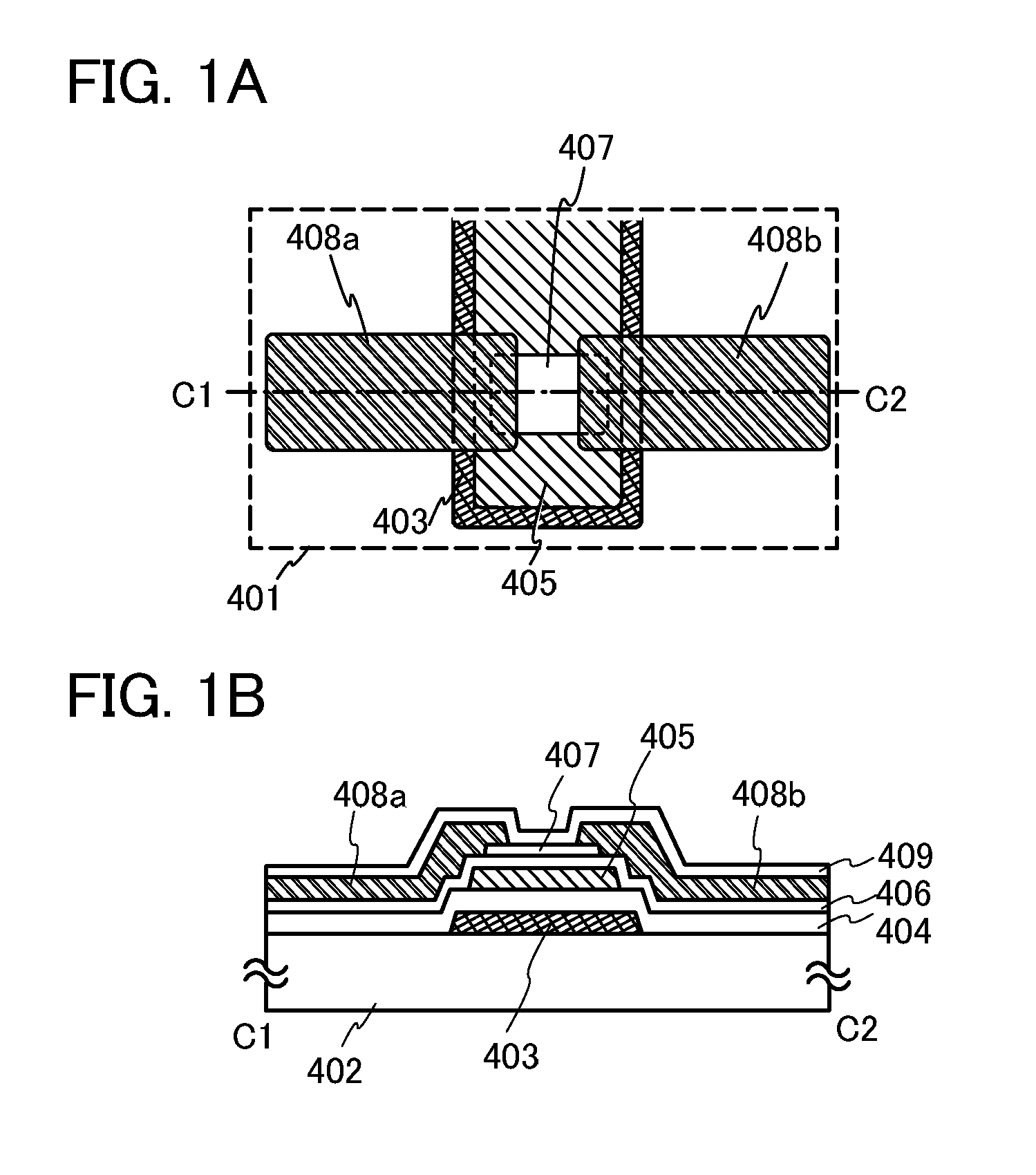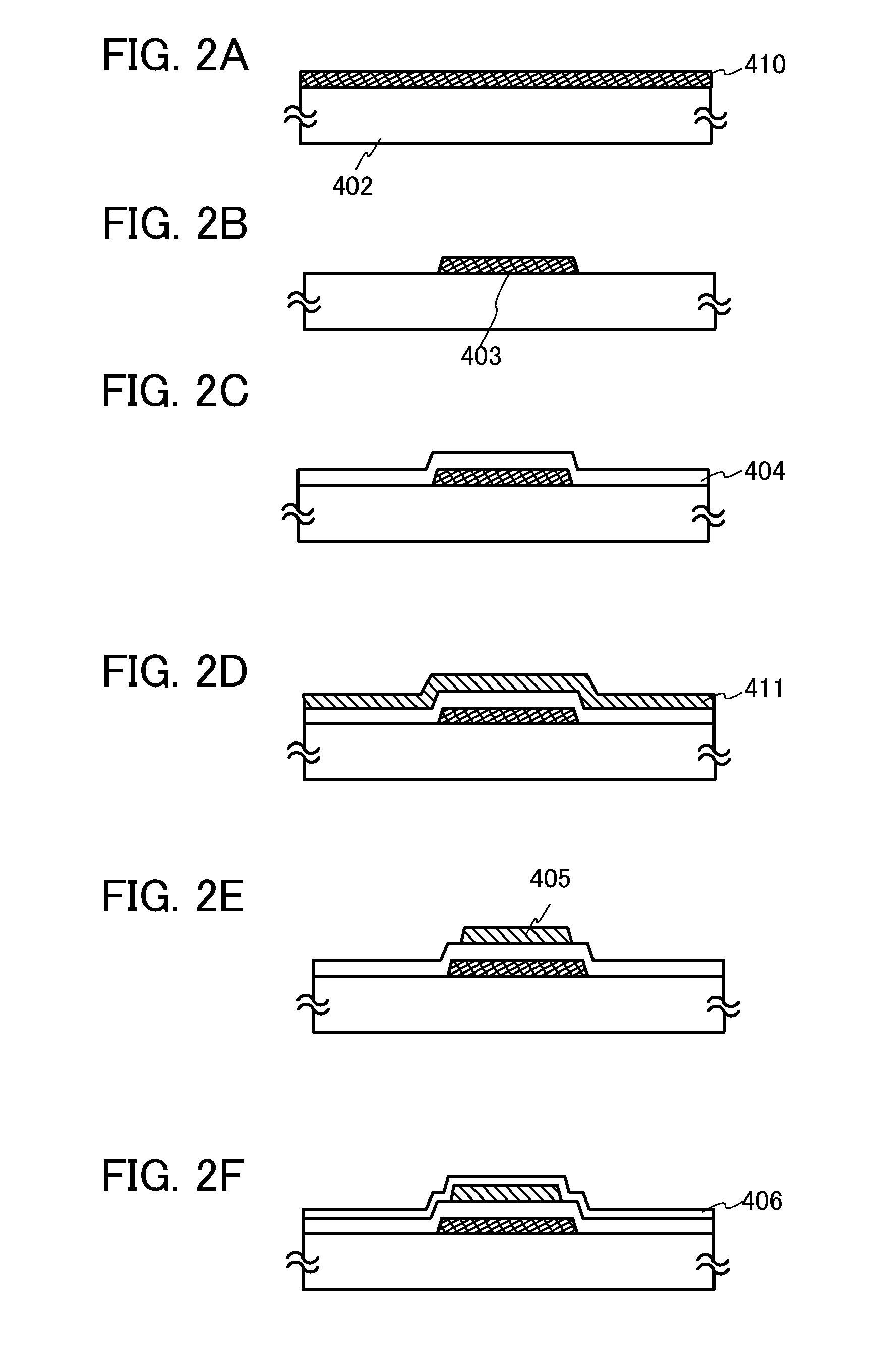Device including nonvolatile memory element
a non-volatile memory element and device technology, applied in the direction of solid-state devices, semiconductor devices, instruments, etc., can solve the problems of limiting the reduction of a proportion of the area occupied by the peripheral circuit, the inability to achieve stable reading operation, and the inability to increase the size of the memory cell array, etc., to achieve stable operation of the circuit, the leakage current of the non-selected memory cell can be extremely small, and the effect of stable operation
- Summary
- Abstract
- Description
- Claims
- Application Information
AI Technical Summary
Benefits of technology
Problems solved by technology
Method used
Image
Examples
embodiment 1
[0038]In this embodiment, a structure, a manufacturing method, and an operation principle of a device including a nonvolatile memory element according to one embodiment of the present invention will be described with reference to FIGS. 1A and 1B, FIGS. 2A to 2F, FIGS. 3A to 3D, and FIG. 4.
Plan Structure and Cross-Sectional Structure of Nonvolatile Memory Element
[0039]FIGS. 1A and 1B illustrate an example of a structure of a nonvolatile memory element. FIG. 1A is a plan view of the nonvolatile memory element and FIG. 1B is a cross-sectional view thereof. FIG. 1B corresponds to a cross-sectional view taken along line C1-C2 in FIG. 1A.
[0040]A nonvolatile memory element 401 includes a control gate 403 provided over a substrate 402, a first insulating film 404 which overlaps with the control gate 403, a charge accumulation layer 405 in contact with the first insulating film 404, a second insulating film 406 which overlaps with the charge accumulation layer 405, an oxide semiconductor lay...
embodiment 2
[0133]In this embodiment, a structure, which is different from the structure of FIGS. 1A and 1B, of a device including the nonvolatile memory element according to one embodiment of the present invention will be described with reference to FIGS. 5A and 5B. FIG. 5A is a plan view of the nonvolatile memory element and FIG. 5B is a cross-sectional view thereof. FIG. 5B corresponds to a cross-sectional view taken along line C1-C2 in FIG. 5A.
[0134]FIGS. 5A and 5B illustrate an example in which the pattern shape of the oxide semiconductor layer 407 is different from that of FIGS. 1A and 1B. The other structures are the same or substantially the same as the structures of FIGS. 1A and 1B; thus, description thereof is omitted.
[0135]In this embodiment, the oxide semiconductor layer 407 is provided so that the width of the oxide semiconductor layer 407 is larger than the width of the charge accumulation layer 405 in a channel length direction (a direction along line C1-C2). Thus, the widths of ...
embodiment 3
[0139]In this embodiment, a structure, which is different from the structure of FIGS. 1A and 1B, of a device including the nonvolatile memory element according to one embodiment of the present invention will be described with reference to FIGS. 6A to 6C. FIG. 6A is a plan view of the nonvolatile memory element and FIGS. 6B and 6C are each a cross-sectional view thereof. FIG. 6B corresponds to a cross-sectional view taken along line C1-C2 in FIG. 6A. FIG. 6C corresponds to a cross-sectional view taken along line D1-D2 in FIG. 6A.
[0140]FIGS. 6A to 6C illustrate an example in which the pattern shapes of the oxide semiconductor layer 407 and the source electrode 408a are different from those of FIGS. 1A and 1B. The other structures are the same or substantially the same as the structures of FIGS. 1A and 1B; thus, description thereof is omitted.
[0141]The oxide semiconductor layer 407 is provided so that the width of the oxide semiconductor layer 407 is larger than the width of the charge...
PUM
 Login to View More
Login to View More Abstract
Description
Claims
Application Information
 Login to View More
Login to View More - R&D
- Intellectual Property
- Life Sciences
- Materials
- Tech Scout
- Unparalleled Data Quality
- Higher Quality Content
- 60% Fewer Hallucinations
Browse by: Latest US Patents, China's latest patents, Technical Efficacy Thesaurus, Application Domain, Technology Topic, Popular Technical Reports.
© 2025 PatSnap. All rights reserved.Legal|Privacy policy|Modern Slavery Act Transparency Statement|Sitemap|About US| Contact US: help@patsnap.com



